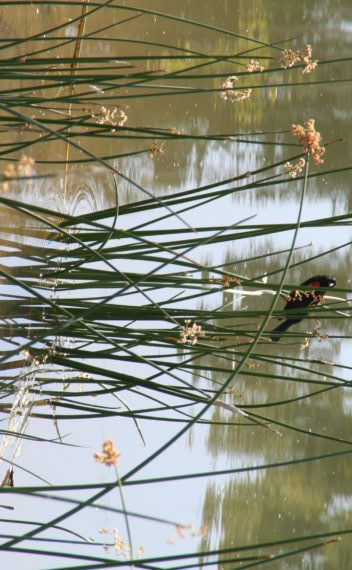Location: San Diego County
Project Type: Restoration, Restoration Implementation
Status: Current
Cost: $85,000
Funding Gap: $80,000
Area Affected: 750 acres
Project Footprint: 70 acres
Area Affected: 1.7 stream miles
Project Footprint: 1.7 stream miles
Assembly District: 71
Senate District: 38
Congressional District: 50
Project Lead/Grantee:
San Dieguito River Park Joint Powers Authority (Nathan Lacey nathan@sdrp.org)
 For more information, visit scwrp.org
For more information, visit scwrp.org
Since its introduction early in the last century, tree of heaven has grown to great density in select areas of this creek section, outcompeting and crowding out native riparian plants. Field staff from the County of San Diego Department of Parks and Recreation have worked intermittently over the past decade to treat this invasive species on the County’s Santa Ysabel East Preserve. Due to limited funding, competing priorities and lack of coordinated treatment approach with neighboring properties, County staff have not fully eliminated the invasive tree and the tree continues to threaten the health of riparian habitat at the headwaters of the watershed. This project encompasses contiguous properties owned by three entities, including two private landowners and the County of San Diego.
Partnering together, the SDRP JPA and the Volcan Mountain Foundation seek to begin non-native tree of heaven (Ailanthus altissima) treatments with a focus on creating a more resilient and sustainable riparian habitat along approximately 1.7 miles of the Santa Ysabel Creek, the headwaters of the watershed, on approximately 70 acres of land, in the San Dieguito watershed at the base of the Volcan Mountain’s range located in northeastern San Diego County near Julian, California.
The project will focus on the following:
•Ongoing efforts to control tree of heaven in riparian habitat and upland transition zones. Efforts would also be made to treat other major invasive plant species at the same time when efficiently leveraging resources.
•Include systematic monitoring prior, during, and after the project, capturing relevant co-variants to allow us to quantify and analyze outcomes and adaptively manage.
•No active treatment in open field agricultural areas, except for buffer zones. Conduct quantitative monitoring for any spreading, allowing for swift management responses while informing future strategy.
Success would be gauged using multiple-criteria based on percent native cover across the treatment area and percent tree of heaven and other invasive cover via GPS ground-truthing.

